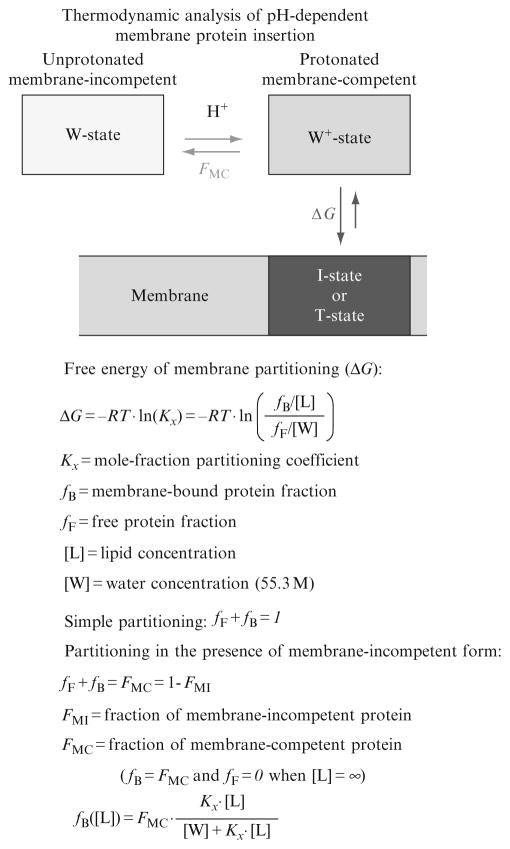Figure 2.3.
Thermodynamic scheme employed in the analysis of the energetics of pH-triggered membrane interactions of proteins (Posokhov et al., 2008a), such as Annexin B12 and diphtheria toxin T-domain. Environment acidification leads to the formation of a membrane-competent form (horizontal arrows), which interacts with the lipid bilayer (vertical arrows). Each of the two processes is characterized by an independent equilibrium parameter: pH-dependent fraction of the membrane-competent form (FMC) and the free energy of membrane partitioning of this form (ΔG). Both parameters, FMC and ΔG, can be experimentally determined via FCS methodology using the principal equations presented in the lower panel, as described in the text. Note that a transmembrane T-state and an interfacial I-state are distinguished in a separate membrane topology experiment as described in these publications (Ladokhin et al., 2002; Posokhov and Ladokhin, 2006; Posokhov et al., 2008a).

